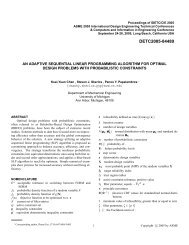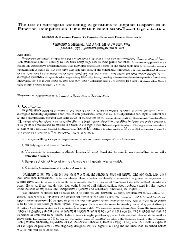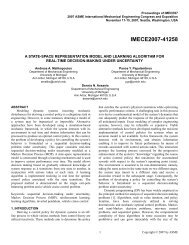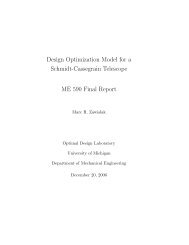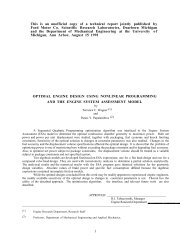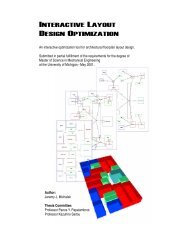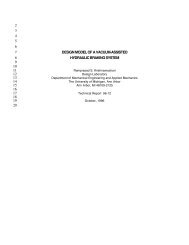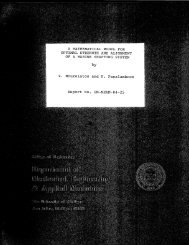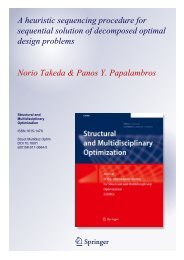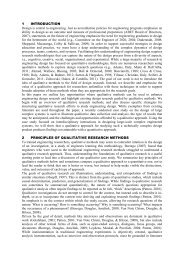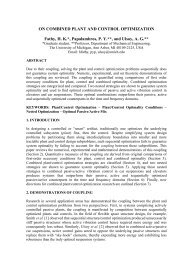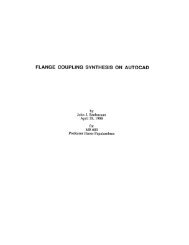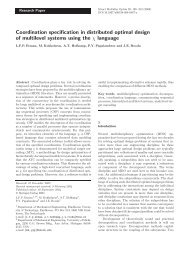Decomposition Analysis of an Automotive Powertrain Design ...
Decomposition Analysis of an Automotive Powertrain Design ...
Decomposition Analysis of an Automotive Powertrain Design ...
You also want an ePaper? Increase the reach of your titles
YUMPU automatically turns print PDFs into web optimized ePapers that Google loves.
Engine Model<br />
The engine model is based on the model <strong>of</strong> Kuzak et al. (1984) but accounts for m<strong>an</strong>ifold<br />
tuning effects slightly differently. We use the friction model <strong>of</strong> Patton et al. (1989), include a<br />
simple NOx model, <strong>an</strong>d account for effects <strong>of</strong> combustion stability degradation with burn duration.<br />
The expression for torque is developed in terms <strong>of</strong> me<strong>an</strong> effective pressure, which is<br />
torque normalized against swept displacement volume. The expression for engine torque is<br />
T e = 7.955 x 10 -6 P bmep b 2 s π /4 n c (40)<br />
where P bmep has units <strong>of</strong> bars. The brake me<strong>an</strong> effective pressure, P bmep , is the difference<br />
between indicated me<strong>an</strong> effective pressure <strong>an</strong>d friction me<strong>an</strong> effective pressure<br />
P bmep = P imep - P fmep (41)<br />
The indicated me<strong>an</strong> effective pressure is the amount <strong>of</strong> fuel energy converted to indicated work<br />
normalized against displacement volume. It is given by the product <strong>of</strong> the mass <strong>of</strong> fuel, the lower<br />
heating value <strong>of</strong> the fuel, Q, the thermal efficiency <strong>of</strong> the engine cycle, η t , <strong>an</strong>d the air-to-fuel<br />
ratio, R af ,<br />
P imep = 3.479 x10 -2 η t ( p it / T m ) Q/ R af . (42)<br />
The thermal efficiency is expressed as<br />
η t = 0.9 ( 1 - c r (-0.33 - .01 Regr/30) )f c - S v (1500/N e ) 0.5 (4.137/P imep ) 0.2 (43)<br />
where<br />
f c = (1.18 - 0.18 φ /0.8) φ ≤ 1<br />
= (1.655 - 0.7 φ) φ > 1 (44)<br />
S v = 0.83 (12s + (c r - 1)( 6b + 4s) ) / (b s (2 + c r )). (45)<br />
The 0.9 multiplier accounts for losses due to finite combustion times <strong>an</strong>d is considered valid for<br />
displacements <strong>of</strong> 400 - 600 cc/cylinder <strong>an</strong>d bore to stroke ratios <strong>of</strong> 0.8 - 1.2. The air-fuel<br />
correction factor, f c , is based on the well-known effects <strong>of</strong> air-fuel ratio on idealized Otto cycles<br />
(Taylor, 1985). Heat tr<strong>an</strong>sfer is strongly dependent upon surface-to-volume ratio. The S v term is



